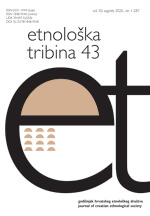Areas with Abandoned and Vacant Properties in Croatia. A Plea for Recognition, Research, Policies and the Development of Regeneration Strategies
Areas with Abandoned and Vacant Properties in Croatia. A Plea for Recognition, Research, Policies and the Development of Regeneration Strategies
Author(s): Sanja Lončar, Dario PavićSubject(s): Social development, Crowd Psychology: Mass phenomena and political interactions, Demography and human biology, Rural and urban sociology, Migration Studies, Socio-Economic Research
Published by: Hrvatsko etnološko društvo
Keywords: areas with abandoned and vacant properties; Croatia; deprivation; wellbeing; regeneration;
Summary/Abstract: This paper explores the phenomenon of areas with a large number of abandoned and vacant properties that have a significant impact on the life of communities in economic, environmental and socio-cultural terms. Although the phenomenon has been present in some parts of Europe and the USA for a number of decades, it has become more prevalent in recent decades. The aim of this paper is to explore whether the phenomenon of abandonment is present in contemporary Croatia, as a complex network of negative demographic, social, economic and environmental causes and impacts. Furthermore, the aim is to create a theoretical framework for research into areas with a large number of abandoned or vacant properties in Croatia. Quantitative analyses of key indicators, content analysis of published media and official documents, and ethnographic field research show that abandoned areas are certainly present in Croatia, as are local initiatives to mitigate the negative situation. The recognition of this phenomenon at national, regional and local level needs to be accompanied by the development of an interdisciplinary research methodology, policies and regeneration strategies. Some guidelines on these matters are provided at the end of the paper.
Journal: Etnološka tribina : Godišnjak Hrvatskog etnološkog društva
- Issue Year: 50/2020
- Issue No: 43
- Page Range: 197-237
- Page Count: 41
- Language: English

